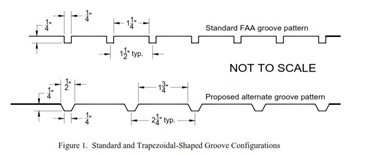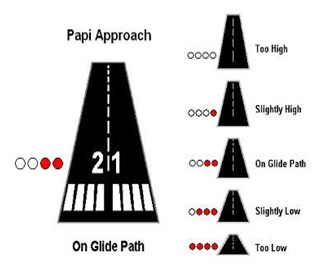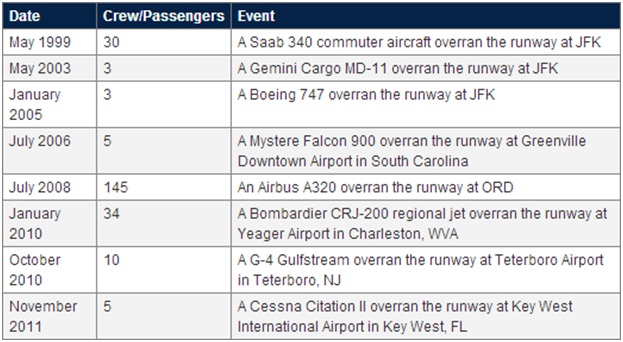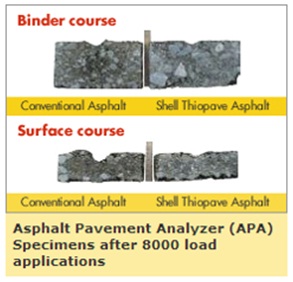





Published on Nov 30, 2023
Modern airports can be defined by the following characteristics :-
Due to high cost, the use of airports was restricted to the executive class of society in earlier days. However, this scenario has changed and there has been significant increase in airport travel worldwide. To cope up with such demand of air-travel, there is a need for airports to be equipped with ability to handle huge traffic.
The airports now-a-days aren’t just used for boarding and de-boarding flights, they have evolved into multi-functionality structures that harbour workplaces, shopping centres, restaurants and clubs.
To make airports more accessible, they have to be integrated with existing transport system in the city which includes railways, bus transport system and metro-rails.
Airports generally occupy very large space. By taking care of rainwater harvesting, treatment and re-use of sewage water, green landscape and use of natural sources for power generation and power optimization, the environmental impact of aircrafts can be reduced.
Airport safety means preventing injury to people or damage to aircraft, vehicles or infrastructure due to human error or technical failure.
As airports across the globe look to find new ways to reduce their carbon footprints, countless sustainable projects have been undertaken, including renewable energy projects, recycling programs, emission reduction efforts, and green building techniques.
Airports generally occupy very large space. By taking care of rainwater harvesting, treatment and re-use of sewage water, green landscape and use of natural sources for power generation and power optimization, the environmental impact of aircrafts can be reduced.
Airports should seek to prevent, reduce or offset significant adverse effects on the environment and enhance positive effects by:
The growth of aviation and avoiding dangerous climate change is not a zero sum game. Both can be achieved through technological advances, low carbon fuels and more efficient operations supported by aviation's participation in open emissions trading.
Most of the noise generated by airports activities is produced by aircraft approaching or taking-off, taxiing along runways and by engine testing.
By designing the runways in orientations that lead almost directly into the sea (An example of such design is Changi International Airport, Singapore) or over a portion of land which has been designated for non-residential use, the impact of noise generated at an airport,on people and surrounding environment, can be reduced.
Air quality is often an issue for people living in urban areas. Burning fossil fuel to create energy for vehicles, housing and industry emits pollutants such as nitrogen dioxide (NO2) and particles.
Large hub airports generate considerable volumes of waste, predominantly from aircraft cabin cleaning, cargo handling and flight catering. Construction waste can also be significant during building and refurbishment.
Large hub airports generate considerable volumes of waste, predominantly from aircraft cabin cleaning, cargo handling and flight catering. Construction waste can also be significant during building and refurbishment.
Environmental effect of waste generated at airports can be minimized by recycle and re-use of waste water and installation of sewage treatment plants.
Airports cover very large areas. As well as runways, terminals and aircraft stands, the airports should include grassland, other landscaped areas and a variety of natural habitats including Standing Water, Ponds, Rivers and Streams, Dry Lowland Grassland, Lowland, Wet Grassland and Scrubs.
Trapezoidal drainage grooves have been found to have a lot of advantages over the conventional rectangular grooves.
Pavement grooves have been scientifically proven to minimize aircraft hydroplaning during both takeoff and landing operations under rainfall conditions and have performed well when installed in both rigid (Portland cement concrete) and flexible (hot mix asphalt) pavements. Saw-cut grooves deteriorate over time from repeated interaction with aircraft traffic, as well as from additional interaction with pavement maintenance activities such as rubber removal, sweeping, and snowplowing operations.
The advantages of using the trapezoidal-shaped groove configuration on runways were reviewed very closely by FAA (Federal Aviation Administration) researchers. It was expected that the trapezoidal-shaped grooves would resist rubber accumulation, closure, and collapse better than the standard grooves, especially in heavily trafficked areas. The most critical runway areas for rubber contamination are the aircraft touchdown zone and the braking zone. In these areas, aircraft tires first come in contact with the pavement when landing or when the aircraft brakes heavily. In both cases, the repeated tire skidding in these areas leads to heavy deposits of rubber that can build up on the inner walls of the groove and decrease the width of the opening in the grooves. Although surface cleaning can alleviate this condition, rubber deposits accumulate again within just a few weeks. Portland cement and asphaltic concrete runways are equally susceptible to the rubber deposits. Physical movement or “shoving” of the runway surface can also cause damage to runway grooves, as heavy loading can cause the grooves to close from a condition of collapse. Extreme heat can also soften asphaltic concrete and, when combined with heavy loading, can make this problem even more pronounced.
The proposed configuration consists of a trapezoidal-shaped groove shape, 1/2 in. at the top, 1/4 in. at the bottom, and spaced 2 1/4 in. center to center. The conventional groove configuration is a 1/4-in.- by 1/4- in.-square groove, spaced at 1 1/2 in. center to center. Grooves are installed across the runway surface; transversely to the runway length and perpendicular to the runway centerline.

• Improved water evacuation capability.
• Greater resistance to rubber contamination.
• Improved longevity.
• Costs 15-20% more than standard groove.
A broad clarification of advantages provided by use of trapezoidal groove is as follows:-
The primary factor in providing water drainage from a runway surface during rainfall conditions is the transverse slope (or crown) of the runway. The slope generally runs between 1% to 1.1/2% down from the crown of the runway at the centerline. Grooves make a secondary contribution to drainage by being able to accommodate some water that would otherwise be standing on the surface as a measurable water depth. In other words, what would be standing water at a given location on a non-grooved runway would simply be a wet surface on a runway grooved with either of the two groove configuration. Standing water on a grooved runway would likely occur only during a period of heavy rainfall or when the grooves were closed or otherwise blocked by debris, rubber, or sand.
In the unsolicited proposal, reference was made to the advantage of physical engagement of the tire to the pavement surface with trapezoidal-shaped grooves because it is wider compared to the standard, and there were fewer grooves per linear square foot of runway. Likewise, the greater angle at the top edge of the trapezoidal-shaped groove, 117° versus 90°, could also be a mitigating factor in reducing tire damage. In early research, damage was noted in aircraft tires when grooves were first introduced on runways. Tire damage usually occurred at the touchdown zone of the runways where aircraft tires were impacting the runway the hardest. Small cuts were noted in some aircrafts tires; however, these cuts did not appear to progress nor were they reported to shorten the life of the tires. Manufacturers subsequently reformulated the materials that they incorporated into their tire construction, and the damage was no longer noted. Other factors also lessened the concern. Continued touchdown operations were found to wear the sharpness of the upper edges of the grooves. Additionally, rubber deposits lessened the possibility of tire damage.
Both a typical VASI (Visual Approach Slope Indicator) and a typical PAPI (Precision Approach Slope Indicator) simply consist of light boxes with two or four lights in each box and metal dividers such that which light you can see depends upon whether pilot’s line of sight is above or below the divider.
In a typical VASI installation, pilots will see both lights white if the aircraft is too high, both lights red if the aircraft is too low, and one red and one white if the aircraft is on the glide path. There may be additional lights to provide an upper glideslope (for larger planes) and a lower glideslope.

In a typical PAPI installation, the pilot will see four white lights if the aircraft is very high (.5 degree or more) and four red lights if the aircraft is very low (.5 degree or more). If aircraft is within .2 degrees of the glideslope, the pilot will see two red lights and two white lights. Slightly low will be three red, one white. Slightly high will be three white, one red.
In this way, PAPI system has better accuracy as compared to the conventional VASI system.
Aircraft can and do overrun the ends of runways, sometimes with devastating results. An overrun occurs when an aircraft passes beyond the end of a runway during an aborted takeoff or while landing. Data on aircraft overruns over a 12-year period (1975 to 1987) indicate that approximately 90% of all overruns occur at exit speeds of 70 knots or less and most come to rest between the extended runway edges within 1000 feet of the runway end.
An engineered materials arresting systems (EMAS) is designed to stop an overrunning aircraft by exerting predictable deceleration forces on its landing gear as the EMAS material crushes. It must be designed to minimize the potential for structural damage to aircraft, since such damage could result in injuries to passengers and/or affect the predictability of deceleration forces. An EMAS should be design for a 20-year service life.
The EMAS technology improves safety benefits in cases where land is not available, or not possible to have the standard 1,000-foot overrun. A standard EMAS installation extends 600 feet from the end of the runway. An EMAS arrestor bed can be installed to help slow or stop an aircraft that overruns the runway, even if less than 600 feet of land is available.
EMAS is composed of a bed of cellular cement blocks encased in a protective cover positioned after a ‘setback distance’ which begins immediately after the end of the paved runway surface. The blocks crush reliably and predictably under the weight of an aircraft and thus facilitate a rapid but nevertheless gentle and consistent deceleration. Each lightweight block is secured to the EMAS base with hot asphalt and the seams between blocks are then taped at their upper surface to prevent water penetration. The depth of the EMAS bed gradually increases with increasing distance from the runway, typically from around 25cm up to 75cm.

Till November 2011, there have been eight incidents where EMAS has safely stopped overrunning aircraft with a total of 235 crew and passengers aboard those flights.
As a matter of fact, Airbus A380 has maximum landing weight of 386,000 kg!
And, Heathrow Airport operates 385,000 flights a year. That’s 1 flight landing or taking off every minute, throughout the year!
To meet such high demand of traffic and huge loads, the future runways have to be made durable enough.
Sulfur-extended asphalt has been used in dense-graded mixtures with sulfur/asphalt binder mass ratios from 20/80 to 40/60, and at times even up to 50/50. The emulsified portion of sulfur performs as an asphalt extender while any excess sulfur performs as a mix filler or stabilizer. The allowable sulfur concentration in the binder depends on the properties of the asphalt. On a long-term basis, approximately 20 percent of the sulfur remains dissolved and/or dispersed as part of the binder. Free sulfur, above approximately 20 percent by weight, solidifies to a crystalline state.
The replacement of asphalt with sulfur is made on an equivalent volume basis, and an accounting for the higher specific gravity of sulfur is needed to maintain existing standards for mix impermeability and durability .

• Increased load bearing capacity
• Increased Stiffness Modulus
• Reduced structural deformation
• Increased fatigue life
• Reduced thermal cracking.
When hot sulfur paving mixtures are kept below 149 c, the Hydrogen Sulphide, Sulfur Dioxide and Sulfur Trioxide emissions are within safe limits.
Care should be taken in maintaining screed temperature control. It is not necessary to excessively heat the screed to obtain good paving results because of the reduced viscosity of the mix obtained with SEA. In addition, higher screed temperatures also increase the level of undesirable emissions (SO2).
Over the last half of the century, air travel has become commonplace around the world. As a result, today's airports have become more than utilitarian hubs.
With air travel expected to be more frequent in coming years, airports are facing several challenges like handling the increasing number of passengers, freight, and baggage in an efficient and cost-effective way as well as creating environment friendly solution.
Hence, there is a need for airport authorities to ensure that today’s airports are durable, comfortable, greener and safer enough to accommodate the upcoming demands in terms of airport traffic, aircraft loads and environmental sustainability.
By ensuring installation of rainwater harvesting wells, sewage treatment plants and energy efficient designs, the effect of emissions caused by aircrafts on environment can be minimized.
At the same time, the airports should be connected to intermodal transport system of the city to facilitate easier approach.
Also, the landing approach on runways can be made more precise by the use of Precision Approach Path Indicator (PAPI) system instead of the conventional Visual Approach Slope Indicator (VASI) system.
Moreover, the runways itself should be made durable enough to sustain heavy loads of modern aircrafts. Sulfur Extended Asphalt as binder has been found to increase the wear capability of runway pavements and use of trapezoidal grooves instead of standard square grooves have proved to be more efficient.
Casualties and damage caused by runway accidents like overshooting of the aircraft due to human or mechanical error, can be reduced to a great extent by installation of Engineered Materials Arresting System (EMAS) at the ends of runway to provide controlled deceleration to aircrafts in case of over-run.
1. The Modern Airport Terminal by Brian Edwards
2. http://www.newdelhiairport.in/fact-sheet.aspx
3. Faa.gov
4. Shell.com
5. Wikipedia.org
6. www.fhwa.dot.gov/pavement/asphalt/pubs/hif12037.pdf
7. http://www.heathrowairport.com/about-us/community-and-environment/sustainability/environment
8. http://www.faa.gov/news/fact_sheets/news_story.cfm?newsId=12497
9. http://www.newdelhiairport.in/environment.aspx
| Are you interested in this topic.Then visit the below page to get the full report |